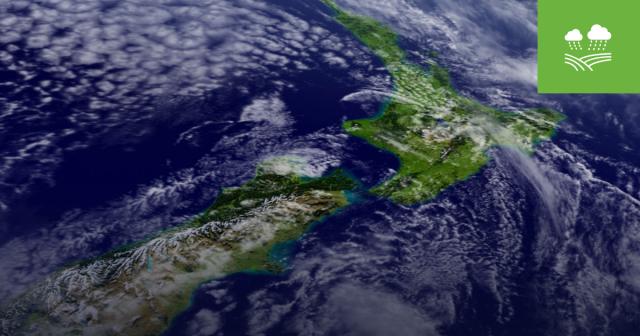A changing climate will have particular impact on farming systems due to their reliance on climate and weather. This chapter and supporting resources will cover how to manage greenhouse gas emissions and removals, build resilience to a changing climate, understand the risks and opportunities and putting plans in place.

Please contact B+LNZ's resources team at [email protected] to request printed copies of resources.
Responding to a changing climate chapter
The chapter resource will guide you through a series of steps to complete this portion of your farm plan. It includes background information on the key concepts along with examples of how to complete any templates.
Responding to a changing climate templates
In this section, you’ll find blank templates that you can print or download to fill in electronically. These templates are compatible with Adobe Acrobat Reader – just download and save a copy to edit offline.
Supporting resource links
- B+LNZ GHG Calculator – provides a free, farmer facing tool to estimate the on-farm sequestration and emissions.
- OverseerFM – a more complex calculator that estimates on-farm emissions and their sources. It can be used to test the impact of farm management changes on emissions (and nutrient flows) before those changes are made. It also accounts for sequestration by trees.
- Farmax – provides an estimate of on-farm emissions. It can be used to test the impact of farm management changes on emissions as well as animal production and profitability. It also accounts for sequestration.
- MPI carbon sequestration look-up tables – you can get a rough idea of carbon sequestration for post-1989 forest land by using the Ministry for Primary Industries (MPI) default carbon tables.
- Trees within farms – this page includes a range of information and resources on the benefits of planting trees as part of a farm system. Along with supporting resources from the B+LNZ Trees within Farms workshops
- Carbon sequestration in woody vegetation (PDF, 538KB) – this factsheet explains why woody vegetation carbon sequestration is important for farmers, and how to calculate carbon stocks and sequestration on-farm.
- Trees within farms opportunities with carbon(PDF, 868KB) – this factsheet covers some of the opportunities that may be available to your farm business from carbon.
- Adapting to a changing climate (PDF, 321KB) – the projected impacts of climate change on New Zealand farming systems and advice on building a resilient system.
- MfE Climate Projections Map – an interactive map allowing you to explore what different climate scenarios are projected to look like for your area, annually and by season, for a number of factors such as: temperature, rainfall, wind and drought.
- NIWA drought forecasting dashboard – this dashboard includes 35 day (5 week) sub seasonal forecasts focused on the risk of drought and rainfall anomaly which can be monitored to aid early decision making.
- Extreme Dry Management Toolkit (PDF, 2.3MB) – for more information on drought management, check out Beef + Lamb New Zealand’s Extreme Dry Management Toolkit.
- Drought Resources – resources to help decision making during dry conditions including management strategies, case studies and information to help you look after yourself and your team.
- Flood management – resources for preparing for a flood, recovering from a flood and health & safety post-flood.
- Snowstorm support – information on preparing for and responding to snow weather bombs, including factsheets and links to websites and organisations that can provide you with support.
- Farmstrong Getting Through – a range of tools and resources about what it takes to recover from extreme weather events. It includes farmer stories, advice from experts and activities to help you get through.
- The Greenhouse effect, including long and short-lived gases (PDF, 219KB) – learn more about New Zealand’s greenhouse gas emissions, and what it all means for sheep and beef farmers.
- Biogenic methane from ruminant animals and nitrous oxide from agricultural soils (PDF, 1.2MB) – this factsheet outlines the production of methane in ruminants and nitrous oxide from soils.
- AgMatters website – practical information, backed by science, to help farmers and growers get to grips with climate change.
- GRA learning modules – learning modules developed by the global research alliance that cover climate change science, international GHG obligations and the science behind agricultural GHG inventories.